Confit - from duck to egg yolks
- rosemary
- Jan 21, 2024
- 6 min read
"Historically, this preservation technique was a necessity to survive times of scarcity. Today, it means we can enjoy produce at its best (even when out of season) and have luxurious preserved foods at our disposal."
Nagi Maehashi/Recipe Tin Eats
I have eaten many, many confits of duck in France, and to be honest, once I think it made me a bit ill - well quite a bit. Our favourite part of France is Languedoc and here duck reigns supreme - either confit - or magret - which is different and on my list for another day. And whilst I'm at it, a note to self to eat more duck this year.
Anyway I have never made confit - well duck is another non favourite for David. Not an absolute no no but almost, so I never cook it. However, I shall try it soon, and I may well even use Nagi Maehashi's recipe for Duck confit - pictured above. I checked out a whole lot of versions including from top French chefs and honestly hers looks to be the best - clearly explained as always and it looks great. The Americans seem to go for David Lebovitz's cheat version (which is actually similar to Nagi's I think), but if I do have a go I shall be loyally Australian. And yes I checked out all the Australian French chefs, and only Guillaume Brahimi had a recipe and it didn't look as good as Nagi's.
The name comes from the French verb 'confire' which means to preserved so it just means preserved duck. It's very old - well it was one way of preserving the meat. Fundamentally what you do is cure the duck in salt and herbs, then cook it very, very slowly for hours in the oven - with the meat being completely submerged beneath the duck fat. And therein lies the rub because you need quite a lot of duck fat - so not for the poor - which is a bit ironic considering this is a dish of the poor:
"Technically any fat or oil can be used to confit a meat. However in traditional French cuisine it’s most typical to use the same animal fat as from the meat you’re cooking. The reason is partly historical: if you’re a farmer who has just harvested a bunch of ducks and plan to preserve some, you’ll likely have plenty of duck fat lying around too." Nagi Maehashi/Recipe Tin Eats
You can buy it now in the supermarket but it's pricey. And I should also add that it's always the duck legs - well the Marylands - the whole leg, not just the drumstick - that is used for this dish. The breast is used for the magret de canard.
These days, of course any manner of things are submitted to the process, which J. Kenji López-Alt of Serious Eats explains in his article What the heck is confit? So here goes - from the simple and fairly common, to almost weird and wonderful.

In Italy they call the process sott'olio which means under oil, and Rachel Roddy provides a recipe for Pollo sott'olio (chicken) which she got from an Italian chef called Domenico Cortese. Very similar to the duck of course, although there may be more herbs in there. And, of course, I forgot to mention that the French also do this to goose and to other game birds such as pheasant and partridge. We anglos seem to like to do it to belly of pork.
The Italians also like to do it to vegetables - especially in Puglia apparently:
"In Puglia, farmers take the ripe vegetables indoors to be cleaned and prepped for the cooking stage. The vegetables are then boiled in white wine vinegar until they are cooked al-dente. They are then cooled to room temperature and tossed with salt and a mix of spices such as black pepper, chili pepper, garlic etc. This is where every family differs, with recipes transferred from generation to generation. Once the vegetables have absorbed the flavors they are packed into jars, and covered with extra virgin olive oil." Especially Puglia

And here I will mention Pam Corbin's (of River Cottage) Asparagus preserved in oil. The recipe can be found on the Epicurious website or in the River Cottage Preserves Handbook - a book I use often. And I have now made the asparagus a couple of times. It was really easy to make - when asparagus was cheap and plentiful - and was very popular when served as part of an antipasto kind of platter or lunch. Bits of this and bits of that. You know the kind of thing. Indeed we shared such a meal last night with our friends Craig and Monika. They had invited us over to pick up some plums. Some plums! Almost two full supermarket bags of them. I've just finished making the first batch of jam. Well the second, as she had already given me a bag full the other day. Some of them are huge. There will be chutney too. I found some plum confit recipes but really they are plum compotes - just baked with sugar. A different thing. I'm off to make a crumble now though.
But I digress. Vegetables. I'm sure I saw somewhere that the Turks commonly preserve vegetables in oil, but I haven't really tracked anything down about that. But I did find some confit vegetables - two from Yotam Ottolenghi, who seems to be very much into the concept - both of them unusual - Confit tandoori chickpeas and Confit celeriac with orange and dill; whilst Nigel Slater goes for A confit of aubergines. At the top of the posh tree as it were there are Confit potatoes from the Quality Chop House in England - apparently a massive hit with their customers - they look like very fancy chips and sound like a real faff to make - but have a look:
The most trendy of the confit vegetables however are garlic and tomatoes. Confit garlic pops up here and there in all kinds of recipes, so I give you two basic recipes to choose from: Confit garlic from Tom Hunt and Garlic confit from Bon Appétit - then you can try this rather gorgeous looking Chicken shish in sweet confit garlic marinade from Sarit Packer and Itamar Srulovich - I'm definitely going to give that one a go.
The other big trendy confit item is tomatoes - and like the garlic, you can of course do oodles of things with them - so herewith how to make Tomato confit by Nigel Slater and one thing you can do with them in a super trendy pasta dish - Confit tomato pasta with dukkah pangrattato from Yotam Ottolenghi.
We now move into the posh realm, although the first category - fish- is not that complicated. I have made Maggie Beer's Salmon poached in extra virgin olive oil and it was indeed beautifully silky, not oily at all, which is what you might expect. Ottolenghi uses some similarly treated salmon in a pasta dish with a typical twist - Confit salmon pappardelle with cardamom and lime and although I shall never be dining at Tetsuya Wakuda's exclusive restaurant in Sydney he has shared the recipe for his signature dish Confit of ocean trout with the world. And whilst we are in the cheffy stratosphere, have a look also at Confit cod with egg yolk and saffron from Nuno Mendes/Great British Chefs.

So let's finish with that egg yolk - have a look at this very brief Instagram video of White truffle taglioni with confit egg yolk from chef Danilo Cortellini. I gather it's a bit of a sensation. The video sort of shows you how, and I think you can find the recipe if you look.
It'a long, long way from some medieval French peasant preserving his duck meat with his duck fat for the hard times ahead isn't it? And yet it illustrates such a very almost ordinary process in the evolution of food these days. Peasant food - la cucina povera is king. You just have to make it look pretty and use expensive ingredients.
And whilst you use a lot of oil and fat in all of those recipes, the bonus is that the oil and fats are now beautifully flavoured and definitely reusable. Just put them in a jar in your fridge.
I must buy a bigger fridge.
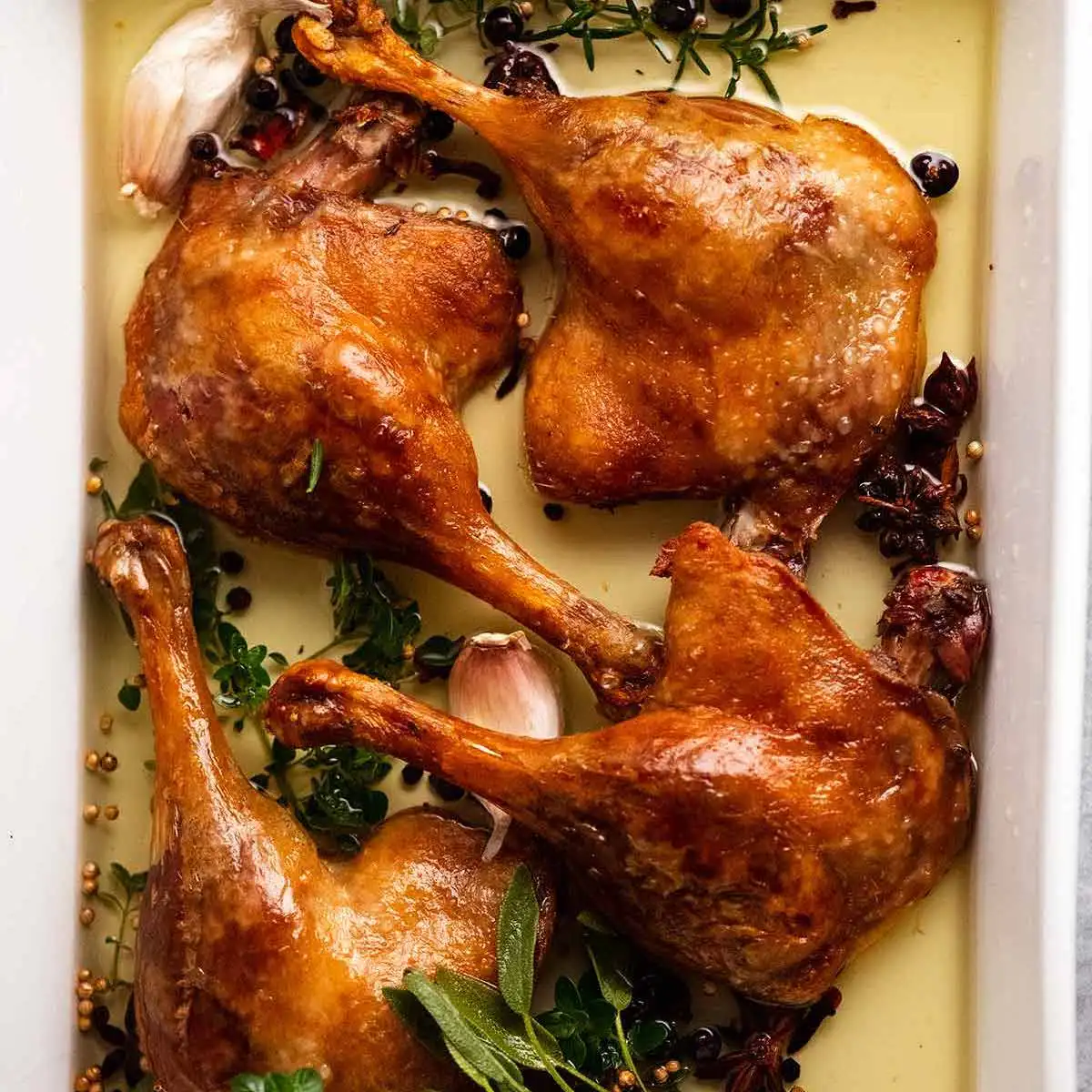
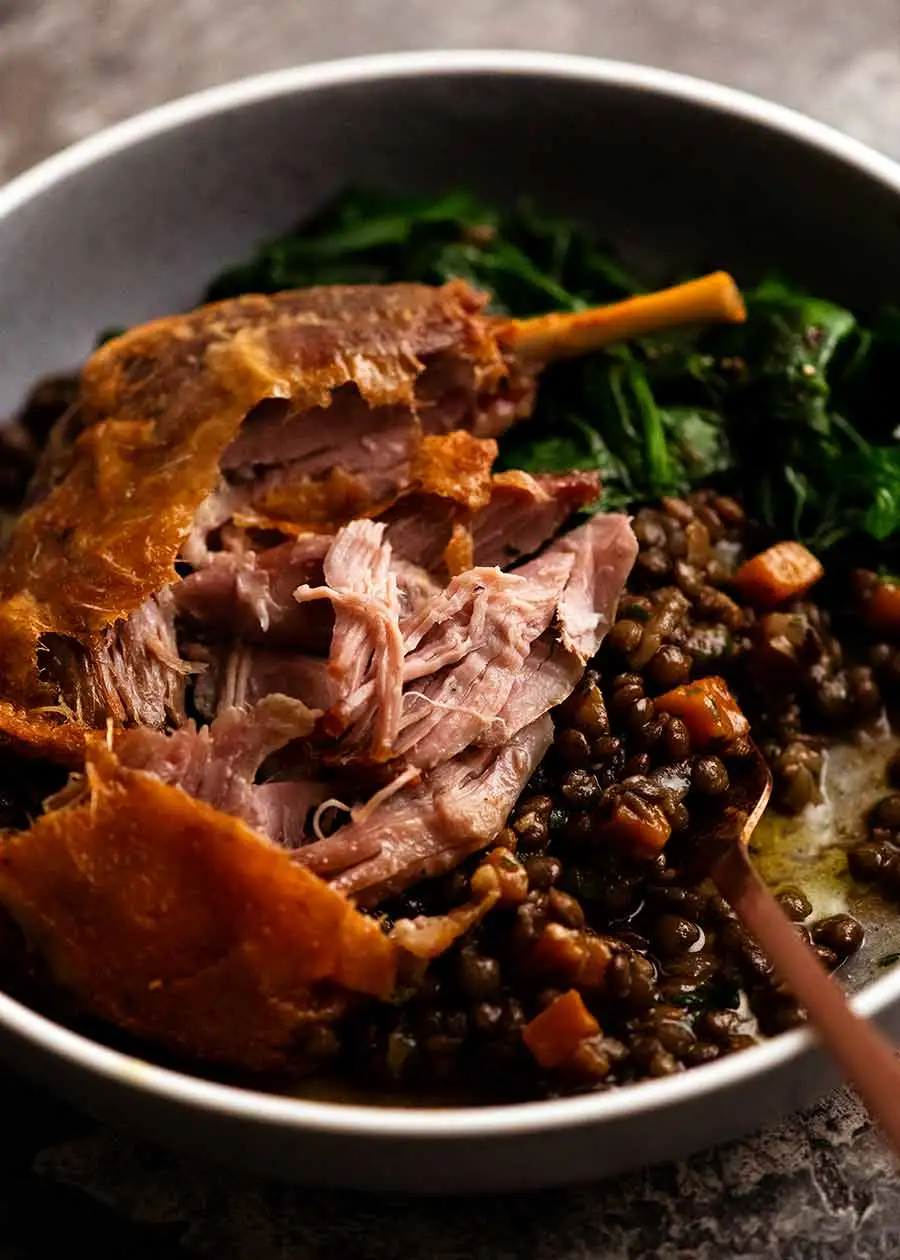
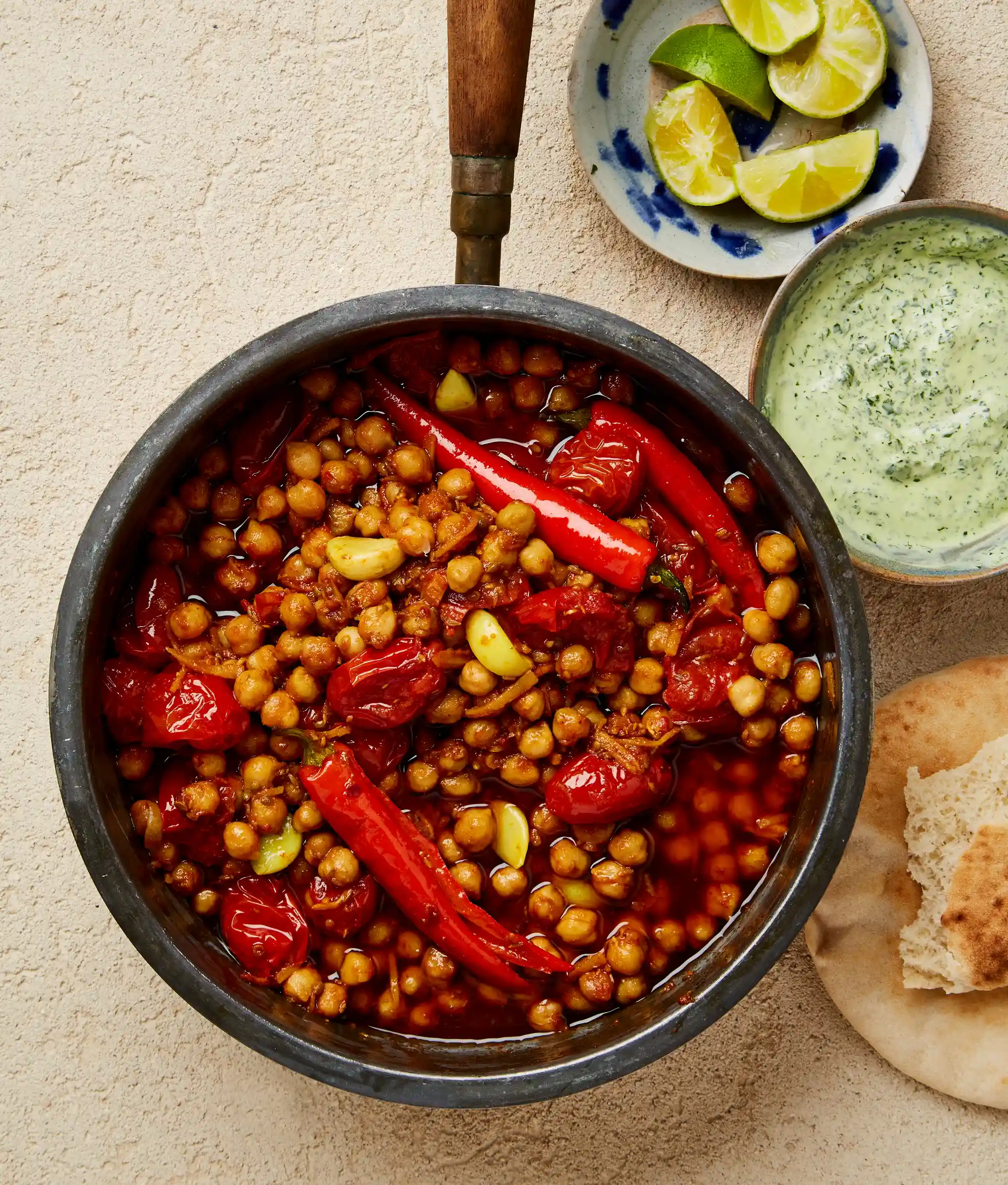
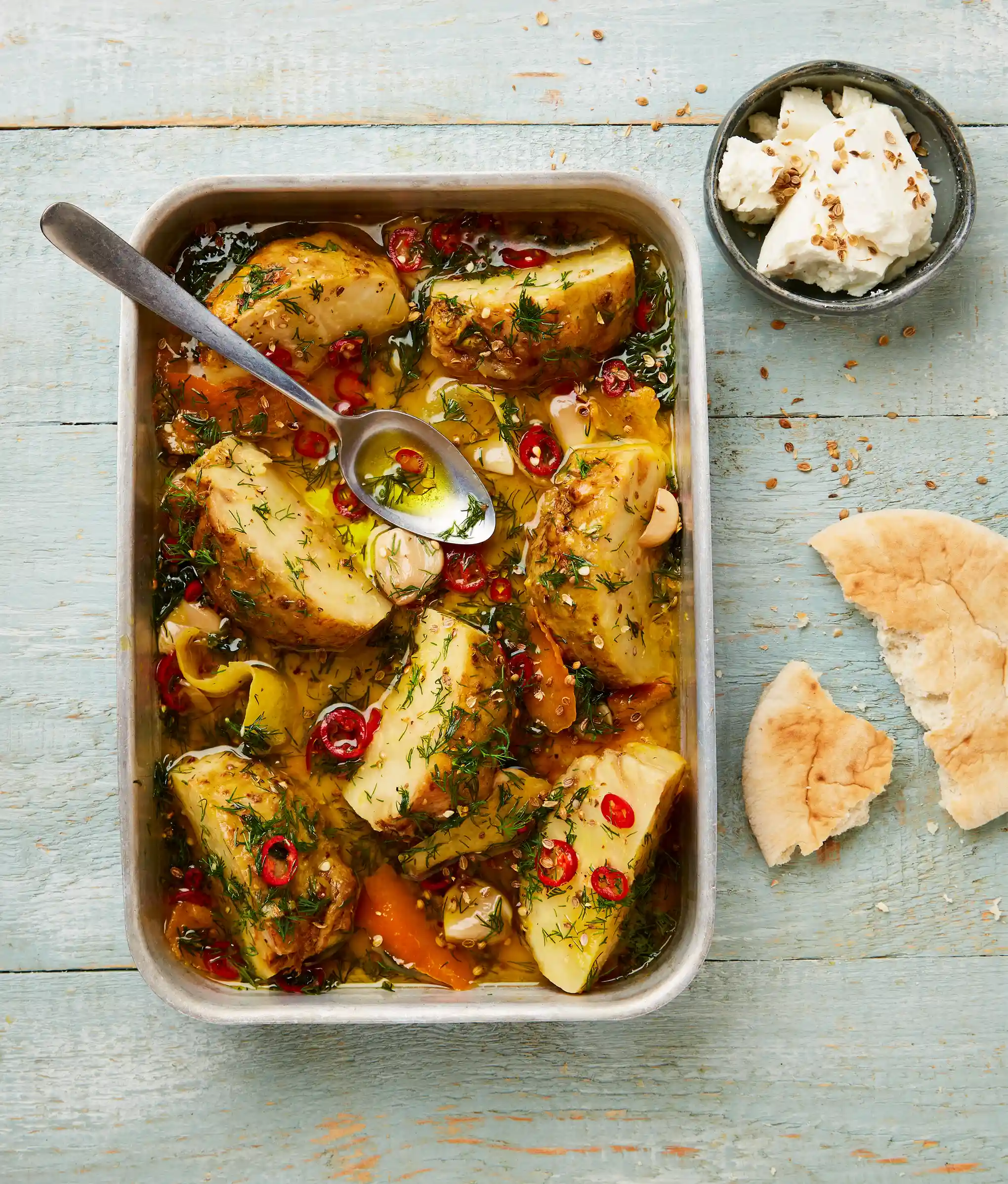
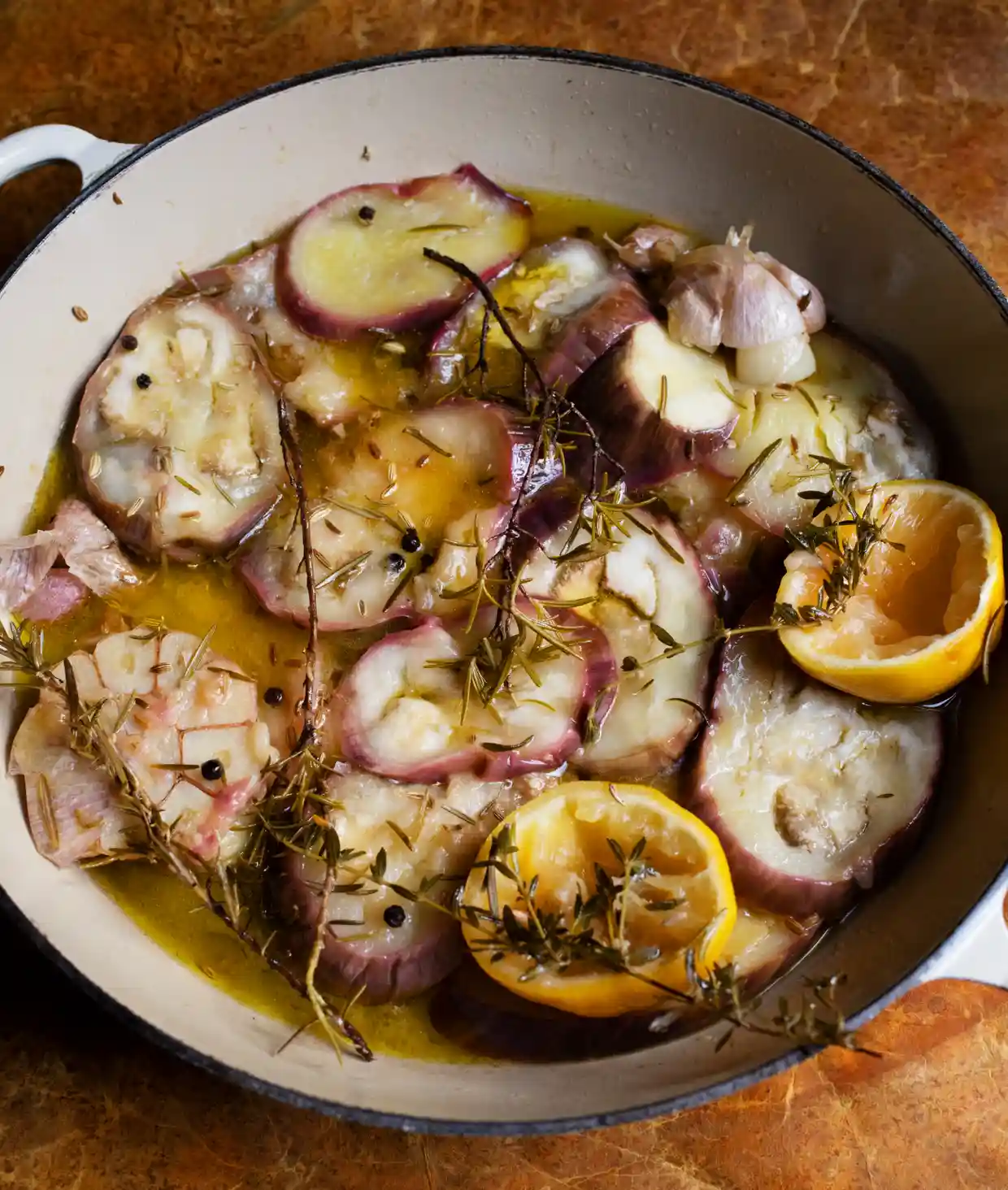
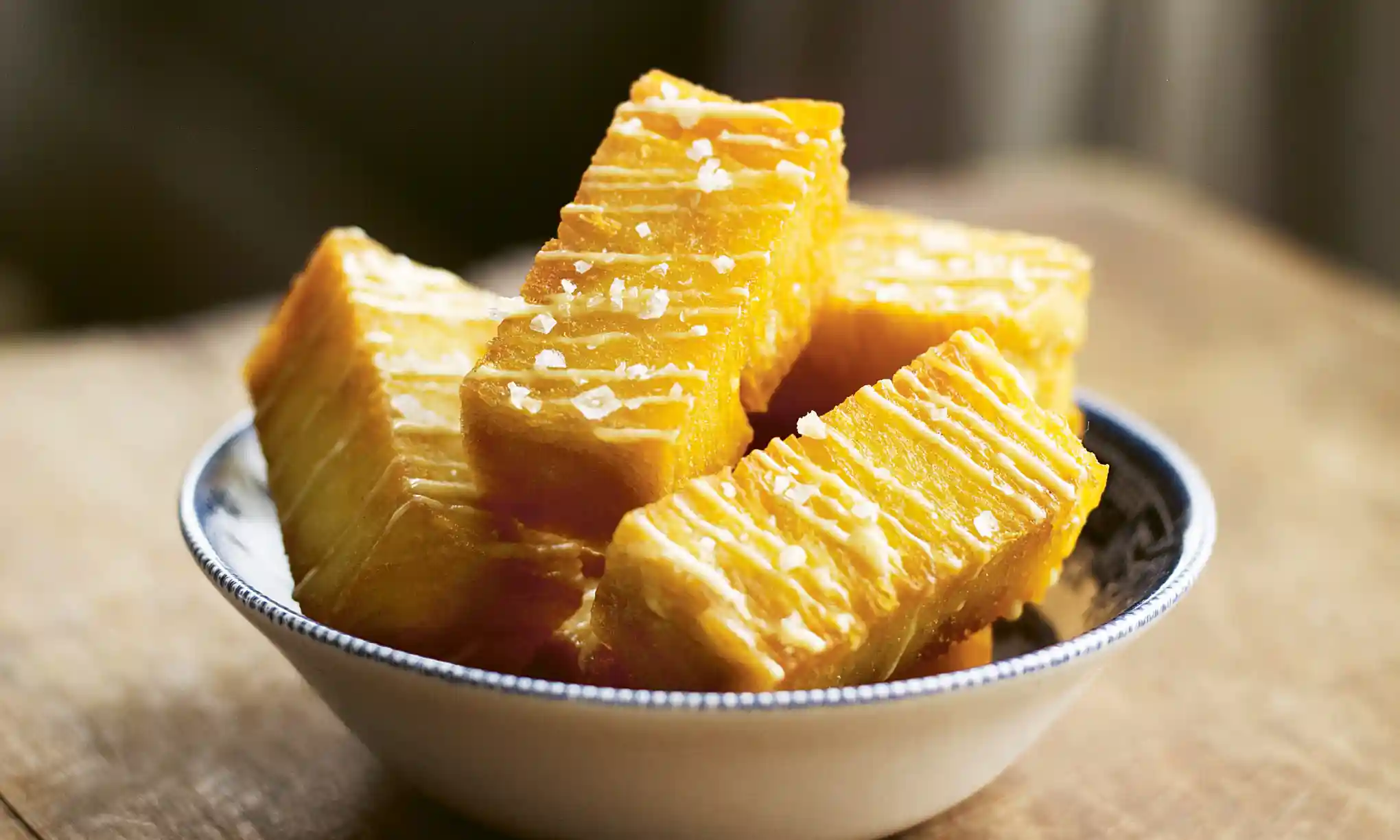
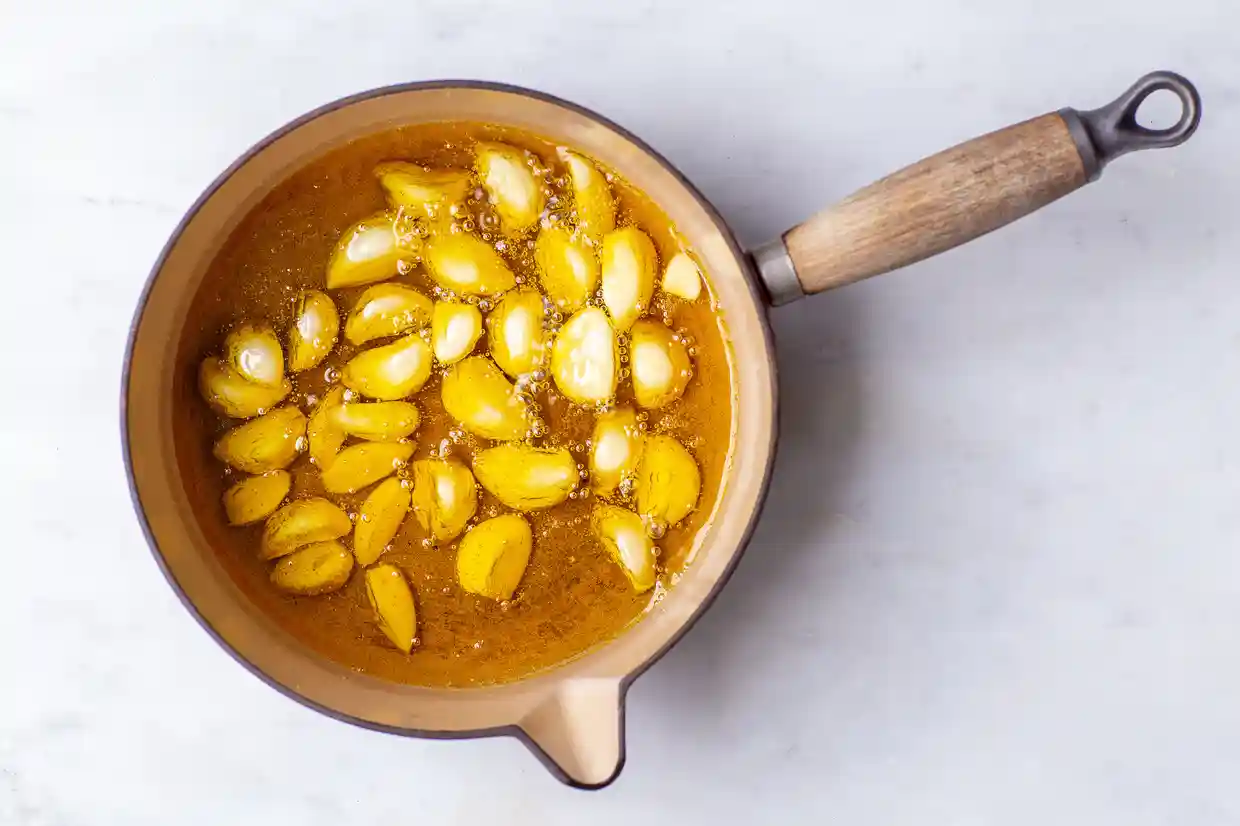
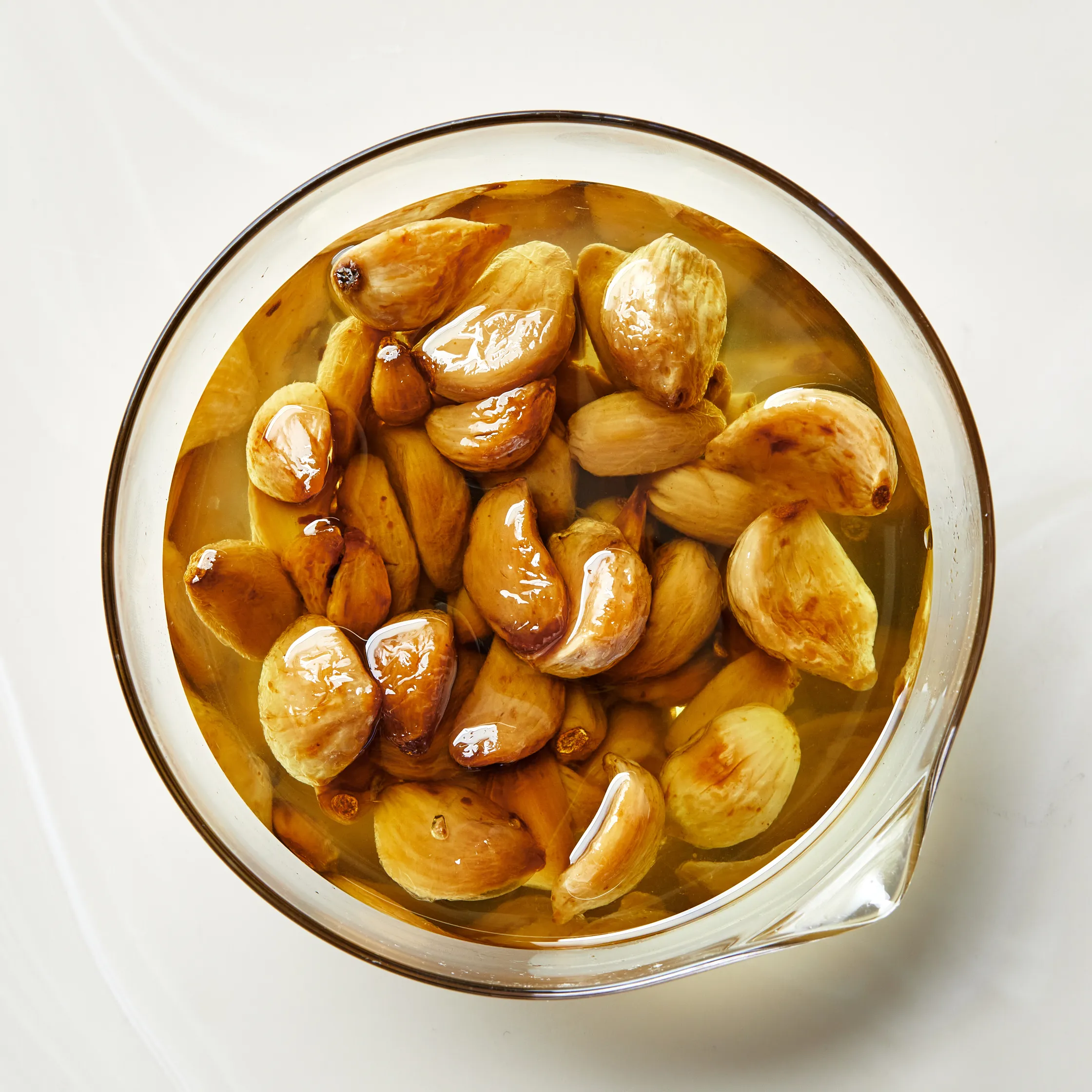
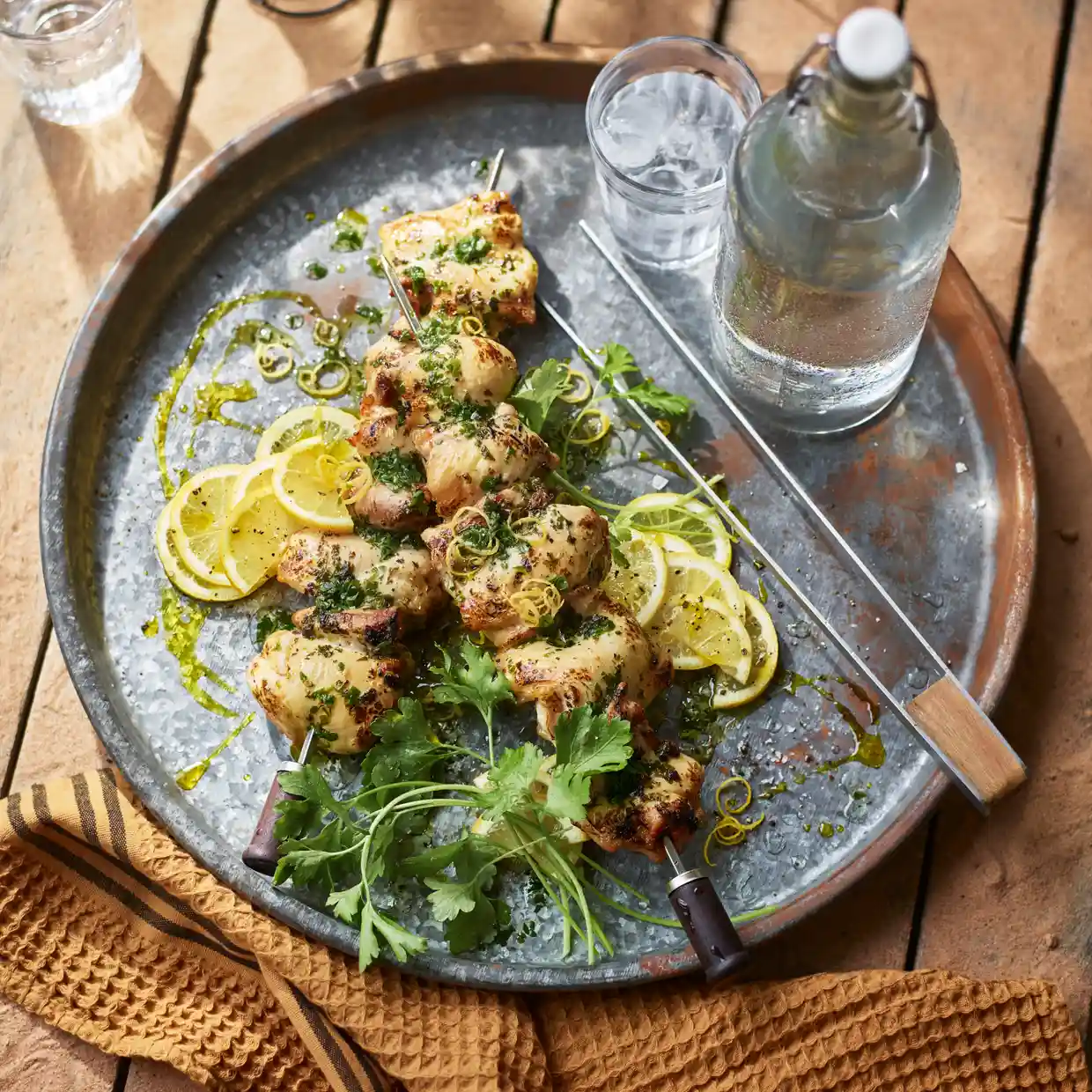
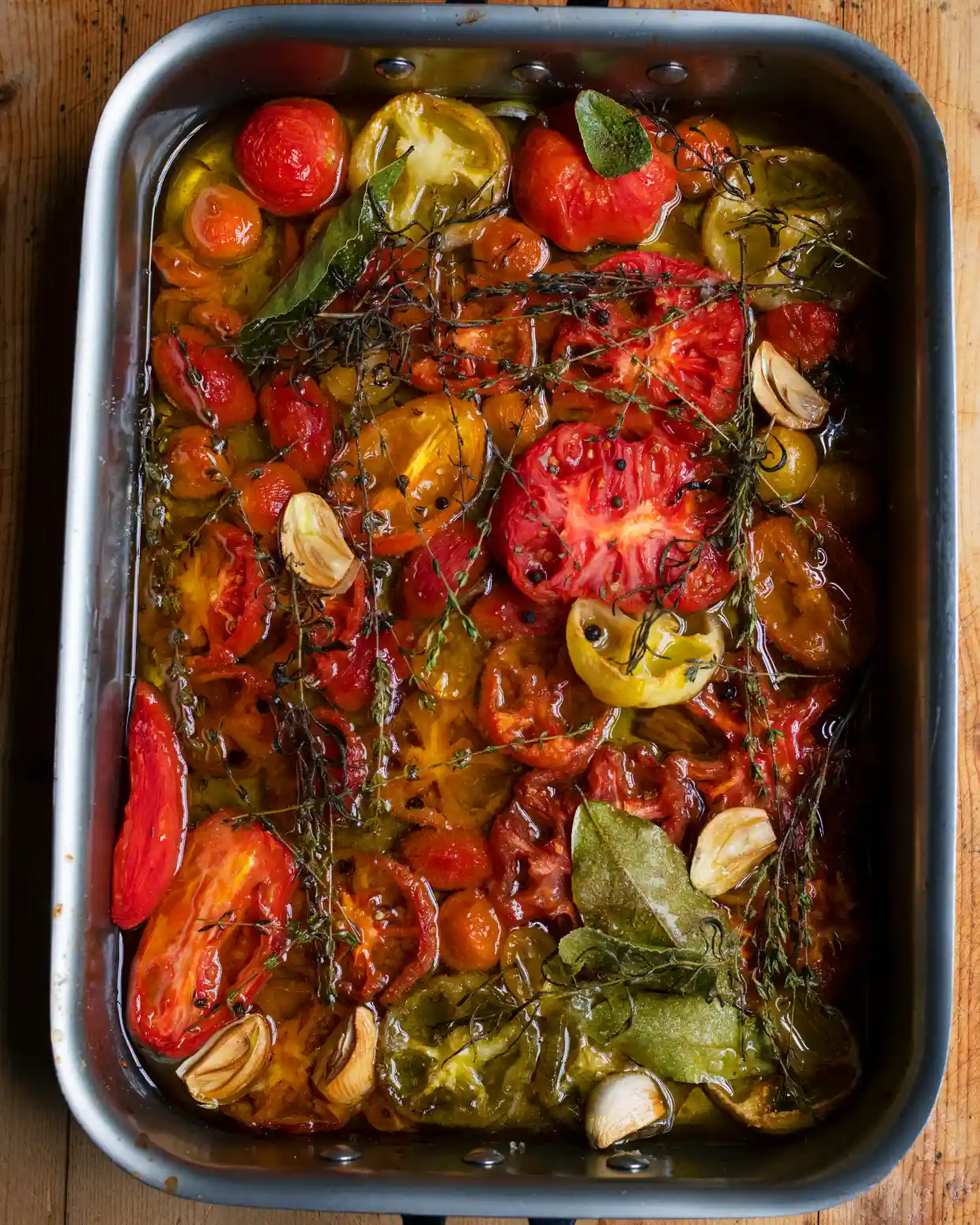
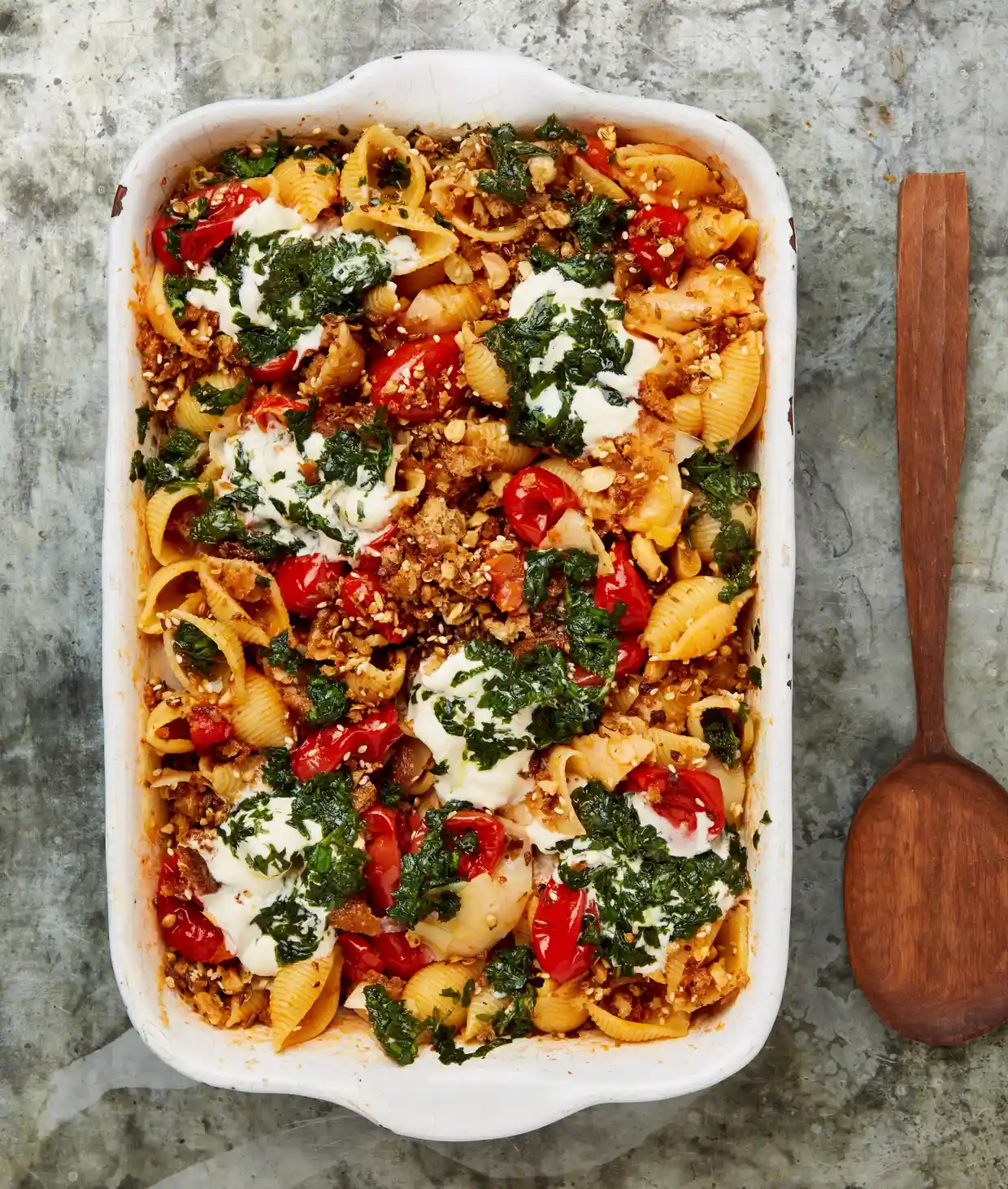


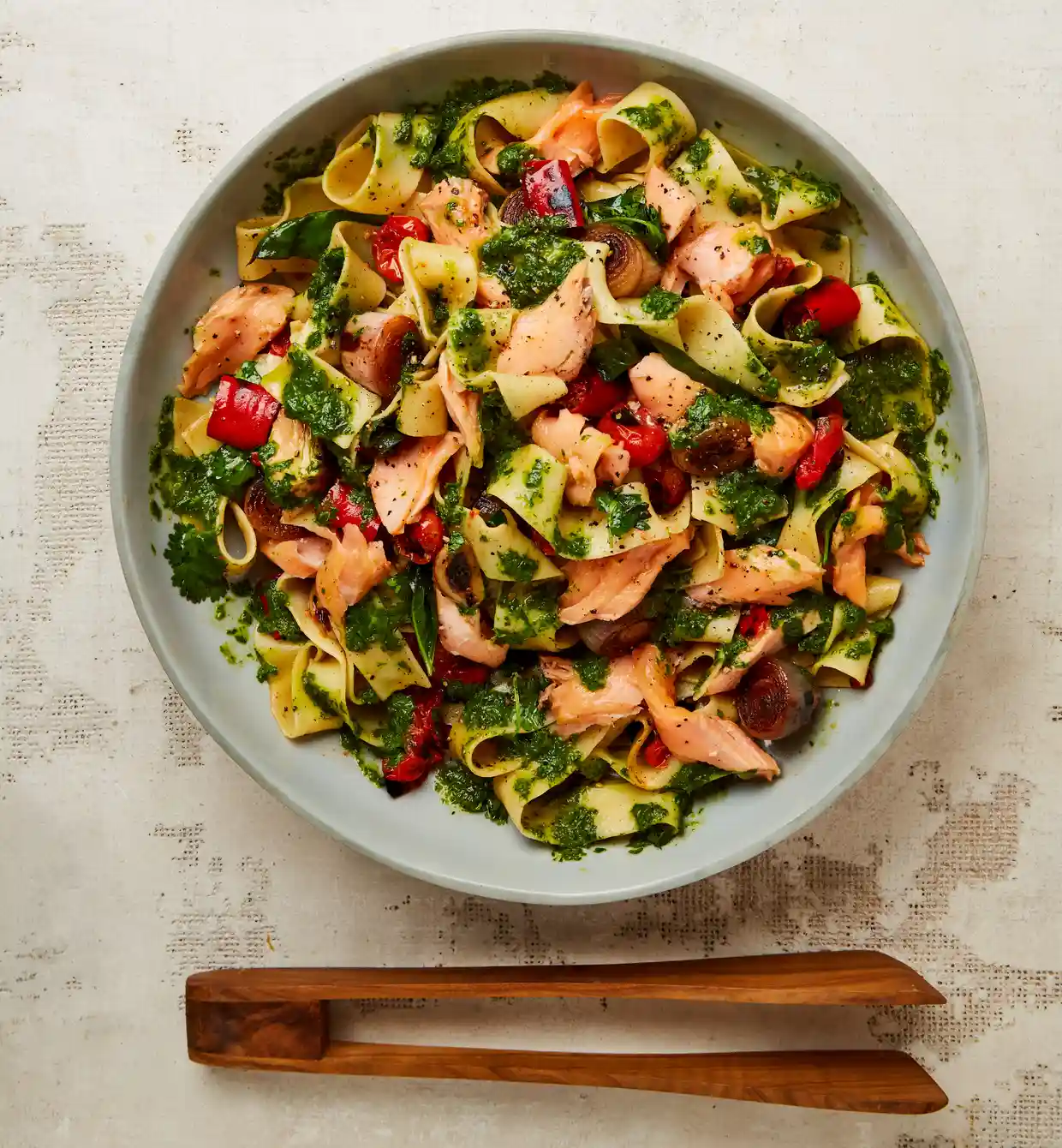


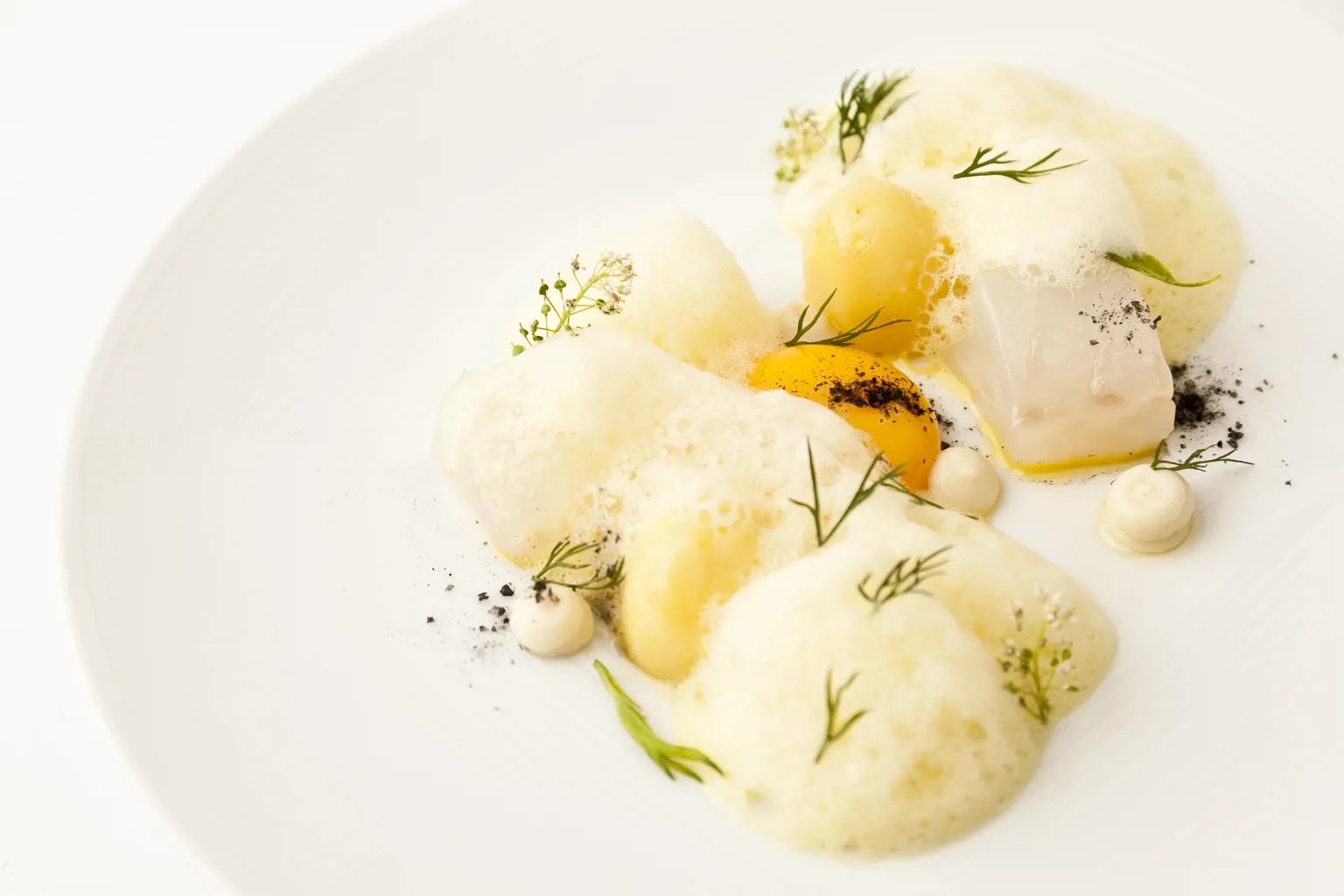



Comments